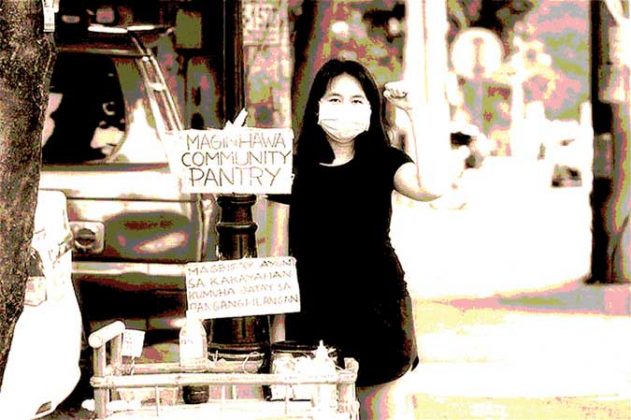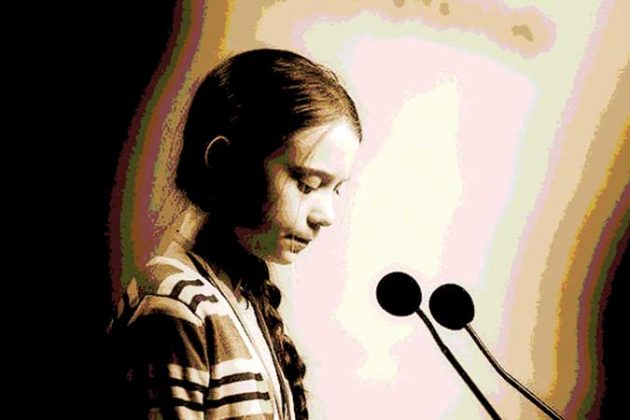What we can learn from Patricia and Greta
“Delay muna ang judgement. Kausapin at kilalanin ang mga tao. Kumbaga learn from the masses.” This was how Ana Patricia Non, the organizer of the pioneer Maginhawa Community Pantry, responded to people’s fears of community members hoarding goods from the cart.
She admitted that at the pantry, which operates on the principle of “Magbigay ayon sa kakayahan, kumuha batay sa pangangailangan” (Give what you can, take what you need), some would indeed take plenty of supplies. But she asked people to suspend their judgment, get rid of their misconception of the poor as greedy, and instead, talk to people to understand their circumstances. While a few do hoard, most people take only what they need. What stands out are stories like that of a homeless man who only took two oranges despite being offered more, and generosity overflowing even from the poorest of the poor.
Patricia’s simple act of kindness, setting up a cart of canned goods, vegetables, and other essentials on a sidewalk in Quezon City, quickly snowballed into a huge movement, with around 350 community pantries having sprouted all across the country. Despite the thousands of people this mutual aid initiative has helped, Patricia remains humble and unassuming, keeping the pantry to what it is at its core — a way to provide immediate relief to the most vulnerable, born out of necessity due to the pandemic and lockdown.
While Patricia tells us to “learn from the masses,” another young woman whose simple act sparked a massive movement, environmental activist Greta Thunberg, tells us to “listen to the science.” In 2018, at the age of 15, Greta started skipping school to protest political leaders’ inaction over the climate crisis. Since then, she has spoken to world leaders at United Nations conferences and started a worldwide climate strike movement involving millions.
Both Greta and Patricia’s ideas and actions are simple, straightforward, and effective. Through their activism, they make it a point to amplify the voices of others, and never claim to own the movements they start.
Greta’s message is to “listen to the science.” She backs up her claims with data, as the movement’s scientific consensus allows her to go straight to the facts. But she doesn’t claim to be an expert and sticks to pointing us to scientists and communicating the reality of the climate crisis, conveying the urgency of the situation.
Like Patricia, she keeps things simple. In an October 2020 interview with the New York Times, when Greta was asked what she thinks draws people to her style of communication, she said: “I don’t think I have any specific wisdom… One thing that I do have is the childlike and naïve way of seeing things. We tend to overthink things. Sometimes the simple answer is, it is not sustainable to live like this.”
In a 2019 TED Talk, she said: “We already have all the facts and solutions. All we have to do is wake up and change.”
Patricia’s message is clear — she has always maintained the pure and simple intentions behind the initiative, is constantly looking for ways to improve it, and refuses to take full credit for its success. In an interview, Karen Davila told her that she was being likened to activists Greta and Malala, and Patricia said the comparison hadn’t sunk in for her.
Greta and Patricia differ in their methods of activism, but we need them both. Bold and passionate people like Greta appeal to our emotions, inspire us and rouse us from inaction. But we also need people willing to do the quiet work on the ground like Patricia, because as she has proven, it can turn into something revolutionary.
The sheer number of community pantries Filipinos have put up is undoubtedly driven by altruism or selflessness in a time of national emergency. And it is a response to bad political decisions, mismanagement, and incompetence. Our leaders deny their shortcomings and say “hindi tayo nagkulang” (we were not lacking) while more and more people are getting hungry and our healthcare system is getting overwhelmed.
If only the government took Patricia’s advice of “learning from the masses” and listened to a wider range of stakeholders from all walks of life, and not just the President’s inner circle, perhaps community pantries would not have been controversial. If more of our leaders had empathy, they’d provide sufficient relief for the marginalized and reallocate funds towards social protection and health expenditures. If they had humility, they’d hold themselves accountable for the many lives and livelihoods lost and recognize the huge gaps in the country’s pandemic response.
In a letter on climate action that Greta Thunberg wrote on Earth Day of this year, she said: “The gap between what needs to be done and what we are actually doing is widening by the minute.” Similarly, when it comes to pandemic response, our leaders must realize that as time goes on, their inaction leads to a very real loss of human lives and livelihoods. The longer it takes them to realize their missteps, the harder it will be for the country to recover.
In our world where leaders exhibit arrogance and insensitivity, Greta and Patricia become models of virtue. We need people who put a premium on listening to vulnerable people and listening to science.
Pia Rodrigo is the communications officer of Action for Economic Reforms.





